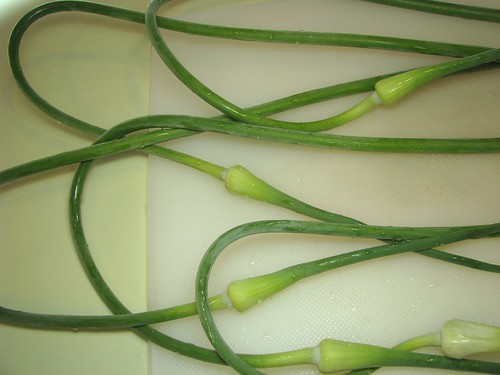 The Boston Globe reports on a green movement they dug up: growing your own produce in your backyard -- or maybe even the White House's gardens. With the price of fuel sky-high and the average produce traveling 1500 miles to reach your local grocery store, locally-grown produce is a way to cut down on U. S. consumption of fossil fuels.
The Boston Globe reports on a green movement they dug up: growing your own produce in your backyard -- or maybe even the White House's gardens. With the price of fuel sky-high and the average produce traveling 1500 miles to reach your local grocery store, locally-grown produce is a way to cut down on U. S. consumption of fossil fuels.Probably a more concrete trend is the interest in Community Supported Agriculture, where members collectively purchase shares of a local farm's products by providing up-front cash in the winter or spring -- when the farmers need the money to plant crops. Since the farm is located not far from the consumer's house, minimal fuel is needed to transport the produce to the customer for a weekly delivery.
Purchasers of a CSA share typically receive a weekly distribution of produce from late spring to mid autumn. The variety of vegetables, fruit, and herbs are seasonal. The system is a shared-risk and shared-reward for consumer and producer. It's local produce, but Not In My Back Yard.
CSA's such as these date back to the 1960s in Germany or 1980s in the U. S. Current estimates are that there are current between 1300 and 3000 such CSA's in the U. S., although one report puts it at 1080.
I have been receiving weekly deliveries of produce from the Red Fire Farm in Granby, a central Massachusetts town located around 90 miles west of Boston. The farm is a great place to observe the landing route for roaring, low-flying Air Force jumbo jet cargo planes at the Westover Joint Air Reseve Base in neighboring Chickopee, if that's your thing.
 It's still early in the season, so quantities and variety are a bit limited, but one week's haul in the early season might be: a couple zucchini or summer squash; a head or two of lettuce; bunches of turnips, radishes, or large pearl onions, all always with the greens still attached; a bunch of garlic scapes [picture at top right], which are the cut tops of garlic (something I've never seen anywhere else!); a head of kale or collard greens; rosemary, dill, cilantro, or chives (with chive flowers); cabbage; and strawberries.
It's still early in the season, so quantities and variety are a bit limited, but one week's haul in the early season might be: a couple zucchini or summer squash; a head or two of lettuce; bunches of turnips, radishes, or large pearl onions, all always with the greens still attached; a bunch of garlic scapes [picture at top right], which are the cut tops of garlic (something I've never seen anywhere else!); a head of kale or collard greens; rosemary, dill, cilantro, or chives (with chive flowers); cabbage; and strawberries.While the advantage of this approach over backyard vegetable gardening is that you don't have to break your back in the process, additional strawberries as well as various kinds of peas are labor-intensive to pick, so many farms allow share-holders to visit and pick-your-own.
Image of garlic scapes by urtica provided through a Creative Commons license.
4 comments:
Alex and I also joined a CSA this year: Stillman Farms. The produce is great and an added advantage is that they deliver to Clear Flour Bakery on Sundays. Fresh fruit and veggies and artisan bread pick-up at the same time!
garlic scapes, just sauteed or grilled lightly--get eaten immediately out of our share (from Brookfield Farm in Amherst--delivers to Newtonville). I've heard of making pesto with them, but I never have any left to experiment with!
Yes, sauteed garlic scapes are quite good. My wife cooked them this way over the weekend: short time at high temp in olive oil, then lowered for a long saute. Tender and delicious.
We joined Stillman's for a meat share..their own pork, beef, lamb & chicken raised sustainably.
We also joined Busa Farm in Lexington for veggies.
A great trend for the environment, the local economy, and our health.
Thanks for drawing attention to it, Mike.
Post a Comment